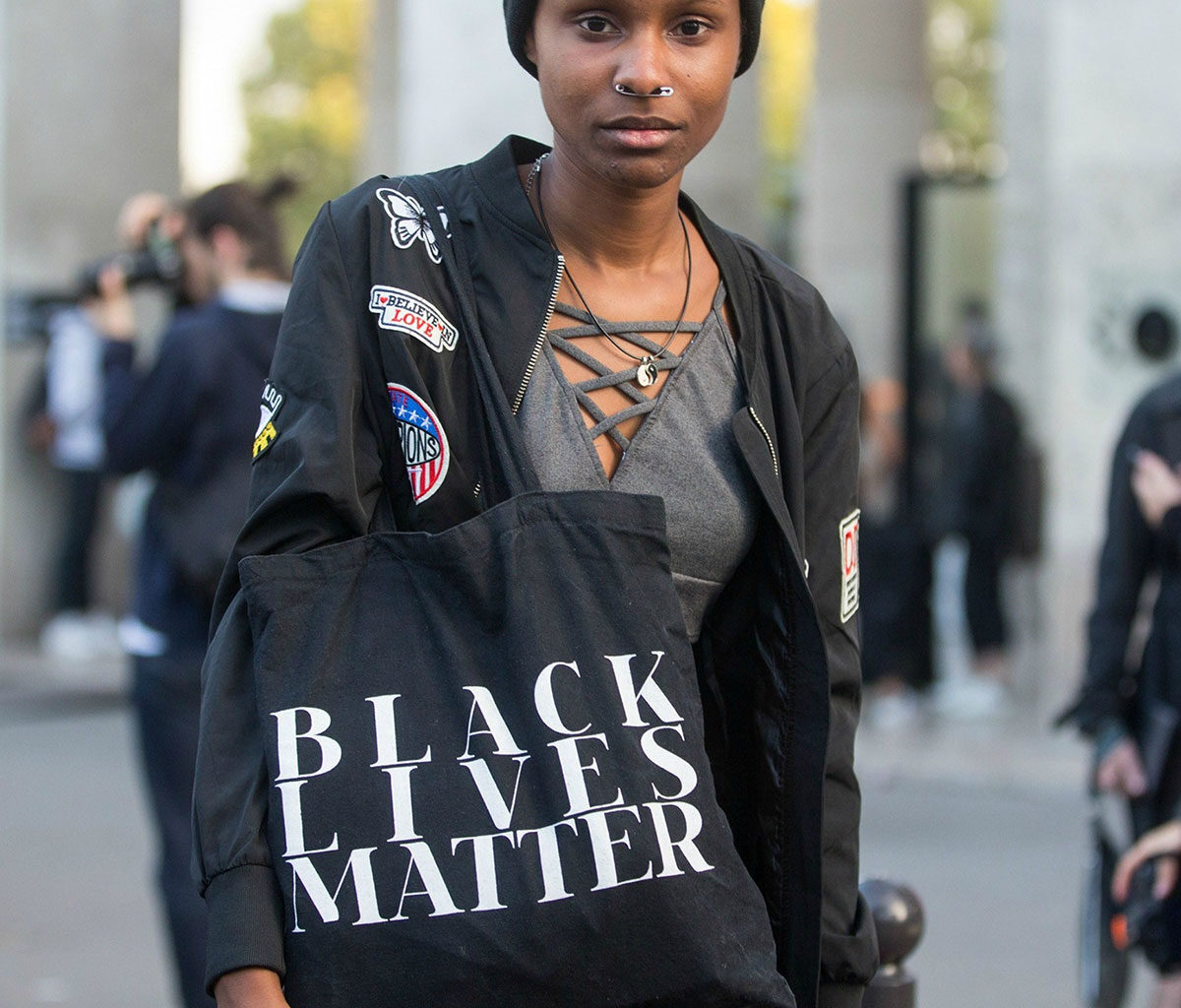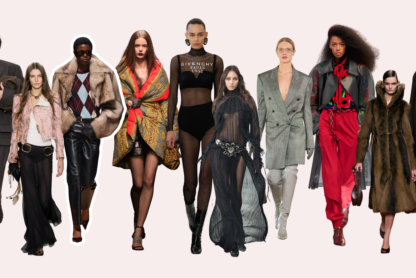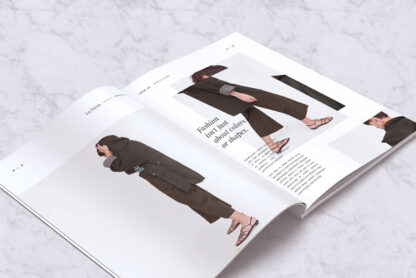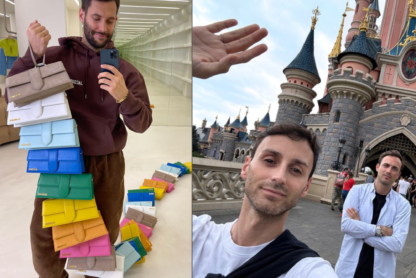We can certainly say that 2020 started as, and continues to be, a particular year. With its two repeated numbers and the beginning of a new decade, we thought it was a year that promised well, made of new beginnings, new projects, new goals. Everything we would have imagined, except what happened. In fact, there are those who wish this year had already passed and would happily skip the second half of the year, to start the new one with the hope that it will be better.
But, the truth is that we cannot go on, pretending that what has happened in these months has never happened and hope to return to what it was the first month of this year.
A global pandemic, new ways of working, closed shops, lost jobs, social distancing, new tragic and devastating episodes of racism, protests …
If 2020 had been a year like any other, even if marking the beginning of a new decade, probably the changes in the system needed would have passed as lightly as has happened so far.
Surely everyone would have preferred that there had been a pandemic with no deaths and that the racist protests had not taken place following other broken innocent lives.
So the least we have to do is to make sure that these lives leave not only an immense void, but bring concrete changes.
2020 highlighted problems that were already known, but which until now had not been seriously addressed.
That the fashion industry should be more sustainable and inclusive in fact, is certainly not something new and it’s not even the first time we are talking about these problems.
Yet it had to come to a global pandemic and other victims to get to consider these problems, deeply rooted for years, seriously.
All the systems and old schemes must change. Starting from the fashion industry, up to the actions of each of us.
It’s enough for multiple collections a year and garments that are worn only once, enough for waste, enough just looking only at profits or having a huge wardrobe without thinking about the consequences that all these have on the environment.
According to Fashion Revolution, the global fashion business was producing 150bn items of clothing each year, far in excess of the needs of a global population of 7.9 billion.
Clothing consumption globally was in 2017 projected to rise still more, by 63% by 2030, according to the Global Fashion Agenda and Boston Consulting Group.
The fashion industry is responsible for 10% of annual global carbon emissions, more than all international flights and maritime shipping combined, according to the United Nations Environment Programme.
The current fast fashion model – a rapid change of collections to stimulate consumer interest – is exacerbating that environmental cost, as the average person now buys 60 per cent more clothing than in 2000, but keeps each garment half as long. But fast fashion, besides having significantly increased the volumes of fashion, has brought up another fundamental problem in this sector: most of those who work in factories are paid far below the plausible salary. I suggest you reading the book Fashionopolis: the price of fast fashion and the future of clothes and/or listening to the episode of the podcast I did with the author Dana Thomas to educate yourself on the impact the fashion industry has on the planet and the working conditions.
We need to change perspective and our mindset. The way in which fashion and its products are developed must connect with the needs of society and the environment and work with them, not against them.
The cycle of fashion for the sake of fashion alone must end.
In an interview with Dezeen, Li Edelkoort one of the most recognized and influential trend forecasters said: “Unfortunately in this disaster, there is no immediate cure. We will have to pick up the residue and reinvent everything from scratch once the virus is under control. And this is where I am hopeful for: another and better system, to be put in place with more respect for human labour and conditions. In the end, we will be forced to do what we should have done already in the first place…It seems we are massively entering a “quarantine of consumption” where we will learn how to be happy just with a simple dress, rediscovering old favourites we own…However, the virus was also showing how economic disruption could have environmental benefits…The recent pictures of the air above China showed how two months without production cleared the skies and allowed people to breathe again…This means that the virus will show how slowing and shutting down can produce a better environment…”
What was once normal has now been questioned.
Even the fashion shows who have been impacted as well, postponed or canceled due to the pandemic, seem to no longer make sense. It is no coincidence that Gucci’s Alessandro Michele announced that he will abandon the usual annual program and move on to just two events per year that unite everyone, men and women. “Marco Bizzarri, our CEO and I, probably no longer intend to follow a rhythm that had become too frenetic and ultimately prevented end consumers from appreciating the quality of a dress, being able to touch it, being able to appreciate it in its artisan aspects, which we must preserve. “
With regard to the ordinary system for presenting collections, the fashion system seems to have already implemented a change, dictated above all by the closures due to the pandemic. Paris, London and Milan will present the new collections online. The British Fashion Council has announced that for the next twelve months London Fashion Week will be presented in a new digital platform active for everyone from 12 June 2020 which will bring together the new women’s and men’s collections in a single gender-neutral format. Fédération de la Haute Couture et de la Mode and Camera Moda respectively, have announced they will also present men’s collections in the digital format.
And if COVID had already given a boost to the need for a change when it comes to the speed and the way of producing fashion, another big event arrived even before exiting the lockdown. George Floyd’s killing, who preceded years of racism and injustice, raised protests with the goal and hope of solving this social problem once and for all.
And the fashion industry has not been left out. Accused over the years of several episodes of racism, fashion seems to continue making mistakes despite the fact that in recent months some companies have started hiring special figures dealing with inclusiveness.
Fashion brands joined the #blackouttuesday protests, posting the now recognized black square on Instagram. This solidarity has been seen, especially by black people directly affected, simply as a movement to take part in for their image, another abstract episode.
But what concrete results and actions are they ready to make?
Many are accusing companies of supporting anti-racist campaigns thinking that an Instagram post is enough when in reality most corporate organizations lack diversity. Which is not the only problem. In addition to having few or some brands, no presence of black staff, black people also have to deal with other racist situations: black stylists who are allowed to borrow limited items for their clients, magazines accused of unequal salaries between whites and blacks, influencer marketing campaigns with lack of diversity, and in general minor career and business opportunities.
In a competitive sector which is fashion, where it is difficult to enter and find a job, everything becomes even more difficult for black people. Virgil Abloh of LV and Off-White and Olivier Rousteing of Balmain are still the only black creative directors of the most prestigious fashion companies.
According to a BoF survey from 2019, only about 30 per cent of the designers who presented at London Fashion Week for spring / summer 2020 were non-white, a figure estimated to be slightly higher – 34 per cent – than New York fashion week.
Already in 2015, of the 260 shows on the New York fashion week program, only three with global reach were by African American designers: Tracy Reese, Public School and Hood by Air. If we include smaller brands with an annual turnover of less than $ 1 million, like Harbison, Pyer Moss and LaQuan Smith, they rose to just over 2.7 per cent.
The percentage of African American designers, members of the Council of Fashion Designers of America was therefore 12 out of 470. In 2014, African American students of fashion schools such as FIT, Parsons and Pratt were 8, 4 and 1.9 per cent respectively according to The New York Times.
The solution seems simple yet why is it so complicated to implement it?
Hire black people, stylists, designers, buyers, managers, models, CEOs … value their work like anyone else’s, pay them equally, promote them up to managerial roles, give them the same possibilities, support them, encourage them and motivate them, break down any disparity.
Yesterday the CFDA put down to paper the planned changes, hoping that the whole fashion system will follow.
“Our industry is in pain and it is not enough to simply say that we stand in solidarity with those who are discriminated against. We must do something.
The CFDA outlines the below initiatives that will immediately be undertaken by the organization to create systemic change within our industry:
- The CFDA will create an in-house employment program specifically charged with placing Black talent in all sectors of the fashion business to help achieve a racially balanced industry. This program will be tasked with identifying Black creatives and pairing these individuals with companies looking to hire.
- The CFDA will also create a mentorship program and an internship program focused on placing Black students and recent graduates within established companies in the fashion sector.
- The CFDA will implement and make available to our members a Diversity and Inclusion training program.
- We will make immediate contributions and take up fundraising activities in support of charitable organizations aimed at equalizing the playing field for the Black community such as, but not limited to the NAACP and Campaign Zero – amongst others.
We urge each and every member of the CFDA to take stock of their corporate structure to ensure that they have a racially balanced workforce and we challenge the retail sector of the fashion industry to ensure that their roster of brands and their product assortment is representative of the Black talent within the industry.”
In addition to these two macro themes, this pandemic has also taught the fashion industry and in particular workers, from interns to senior figures that you need to have a plan B and be flexible. Many have lost their jobs and without a backup plan that could be a freelance gig for example, they have found themselves facing economic problems of no small importance.
Those who have continued to work and do business are those who have managed to be flexible and adapted to change: Zara has sent products to the models to shoot at home to be able to continue posting the new collections, stylists have made their consultancy through Zoom, photographers had their products sent home to shoot still life, buyers purchased through digital showrooms, pr agencies organized online presentations, and everyone, managers and creatives, found themselves discussing upcoming collections, strategies and initiatives on Zoom.
This year also taught us a new way of working, some did not appreciate it, others took a while to get used to it but now they prefer it, and for some, it has been more productive. Working from home means saving downtime such as commute, and it has become clear how many meetings can be video calls without wasting time moving to the other side of the city.
At the end of the story, what I hope 2020 has taught everyone so far is that talking without taking action cannot still be the case. While the themes and problems that have come out in these unprecedented months are not new, what 2020 has to really teach us is that we need to act and now. The change needs to happen right now. We have to stop thinking about these problems and realizing them without then making concrete plans to change the system. And for all the future system flows, we will have to act immediately, and not wait for a global pandemic, violence, or worst, victims to change something.









